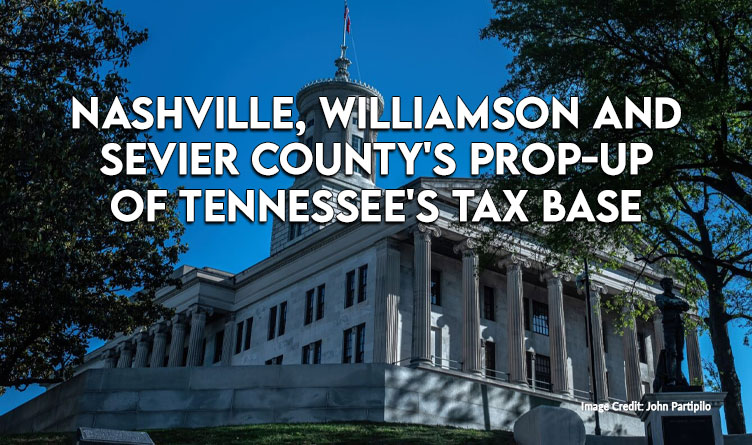The state legislative office released its latest county-by-county reports, showing once again how much tax dollars rely on three counties.
Image: Tennessee State Capitol. Image Credit: John Partipilo
By Adam Friedman [Tennessee Lookout -CC BY-NC-ND 4.0] –
Three Tennessee counties subsidize a significant portion of the state’s tax collection, sending in more than double the dollars they receive, an analysis of legislative spending and state budget data from 2023 shows.
Tennessee’s Office of Legislative Budget Analysis released its county-by-county reports last month, spanning from July 1, 2022 to June 30, 2023, and showed the state spent $18.4 billion across the 95 counties.
But, the distribution is not equal. A Lookout analysis of various tax collections over the same period found the state collected $5.7 billion in Nashville-Davidson, Sevier and Williamson counties, with those communities receiving $2.3 billion back, a difference of $3.4 billion.

Tennessee counties losing out
Of Tennessee’s 95 counties, 14 receive a lower percentage of money from the state than taxes collected. Nashville-Davidson, Sevier and Williamson counties lead this list by a significant margin.

Tennessee’s tax system — with no income tax — relies heavily on sales taxes to fund its various functions. This creates a system where communities with larger populations and high tourism contribute more to state coffers.
But the highest generators are only sometimes the ones losing out the most. In Shelby County, Tennessee’s largest, the state spends about the same amount it collects because of costs related to TennCare.
Tennessee’s legislative budget office has tracked state spending in each county since at least 2012, but there are better ways to see the impact than following exact dollar amounts.
This is because that state almost always collects more local taxes than it sends back to the counties to put money in its rainy day account and fund programs that don’t impact a specific county.
Instead, the Lookout’s analysis examined the percentage of contributions and distributions, showing that 14 counties contribute more taxes than they receive back. On the flip side, 50 counties receive 50% or more money from the state than they contribute.
A Lookout analysis of the same data in 2022 found 16 Tennessee counties propping up the other 79.
The legislative office’s county-by-county reports track spending in 32 categories. TennCare, education, prisons and state employee retirement payments are often the largest state-funded portions.
Bledsoe, Lake, Trousdale, Morgan and Johnson were the five counties that benefited the most from this tax distribution system because of state prison spending, which provides government-funded jobs.

Methodology
This story’s data tracks the fiscal year 2022-23, from July 1, 2022, to June 30, 2023.
The Office of Legislative Budget Analysis provides state spending data in each county. The data includes federal and state expenditures in each county. Scraping the data from all 95 PDFs provided here produced an exact number for how much Tennessee specifically expends in each county.
The total spent in all counties for the fiscal year 2022-23 was around $18.4 billion.
The state estimated it would collect around $22.1 billion from various taxes, according to Tennessee’s state budget (see page A-62)
The Tennessee Department of Revenue tracks sales, business, privilege and mixed drink taxes collected in each county. This totals $14.9 billion in the fiscal year 2022-23. The link to the data is here.
The rest of the taxes collected totaled $6.2 billion (page A-62 of the state budget).
The Lookout used the average of two methods to calculate each county’s contribution to these other taxes which are mainly excise, franchise and gasoline taxes.
For the first method, the Lookout distributed the $6.2 billion in other taxes based on the percent of state’s population in each county from the 2020 U.S. Census.
For the second method, reporters took the percent of Tennessee’s total GDP generated by each county in the latest year available and multiplied it by those taxes. The data is available here from the U.S. Bureau of Economic Analysis.
The Lookout averaged the two numbers for each county and then added those to the Department of Revenue’s numbers tracking sales, business, privilege and mixed drink taxes collected to get a revenue generated number for each county.
To produce the percentages in the chart above the Lookout divided the amount of taxes each county generated divided by the total taxes collected (State taxes collected). Then divided, the amount the state spent in each county divided by the entire state county expenses (State’s redistribution).



